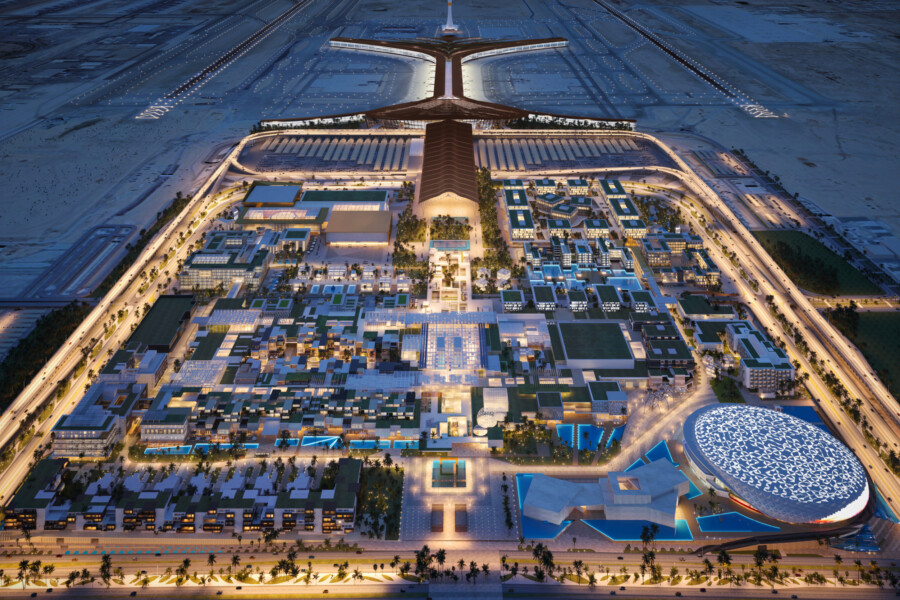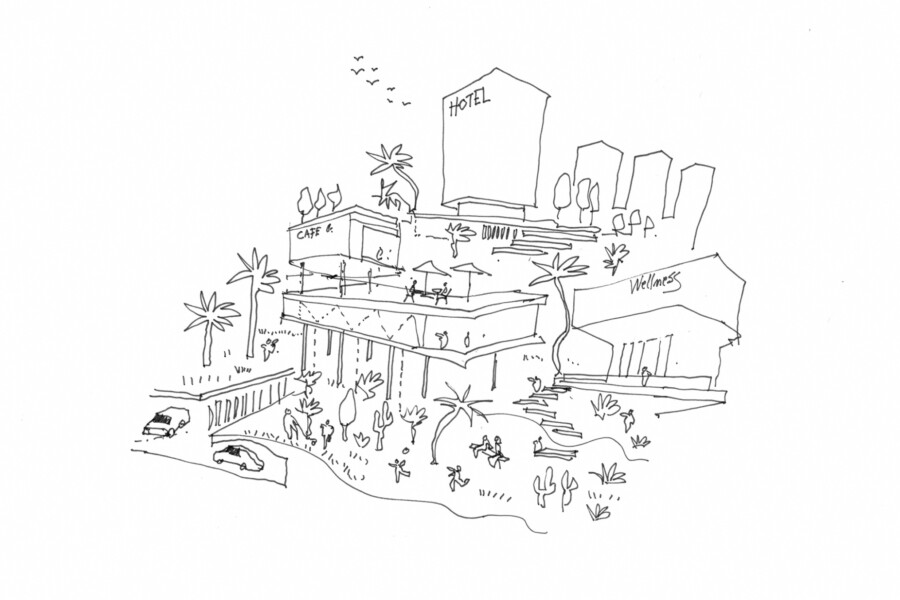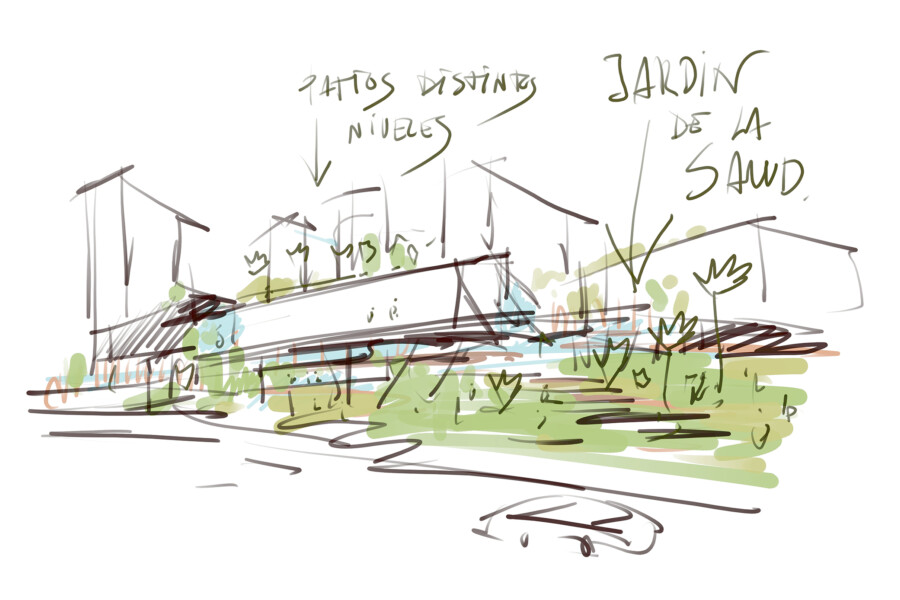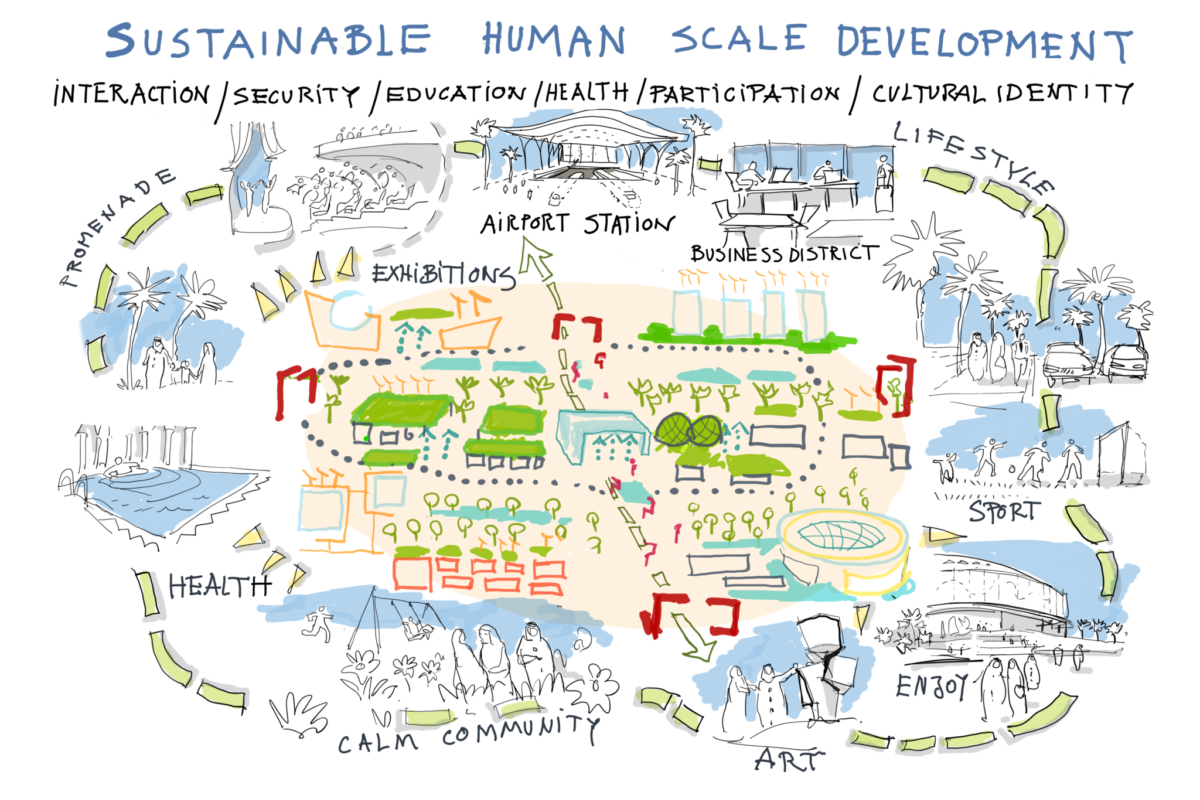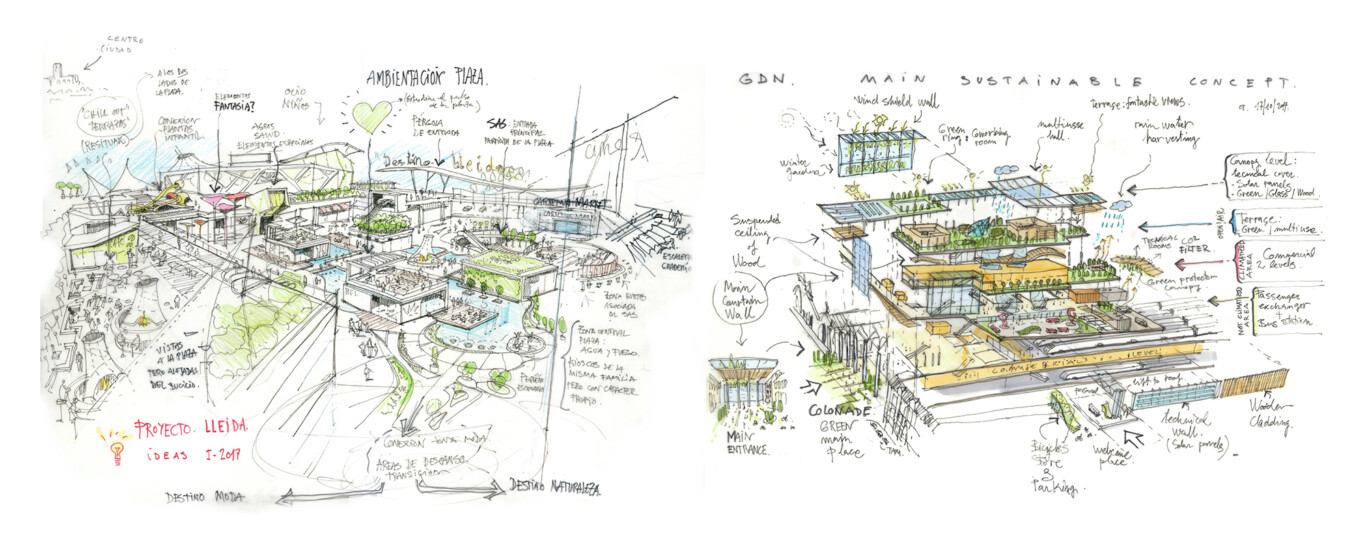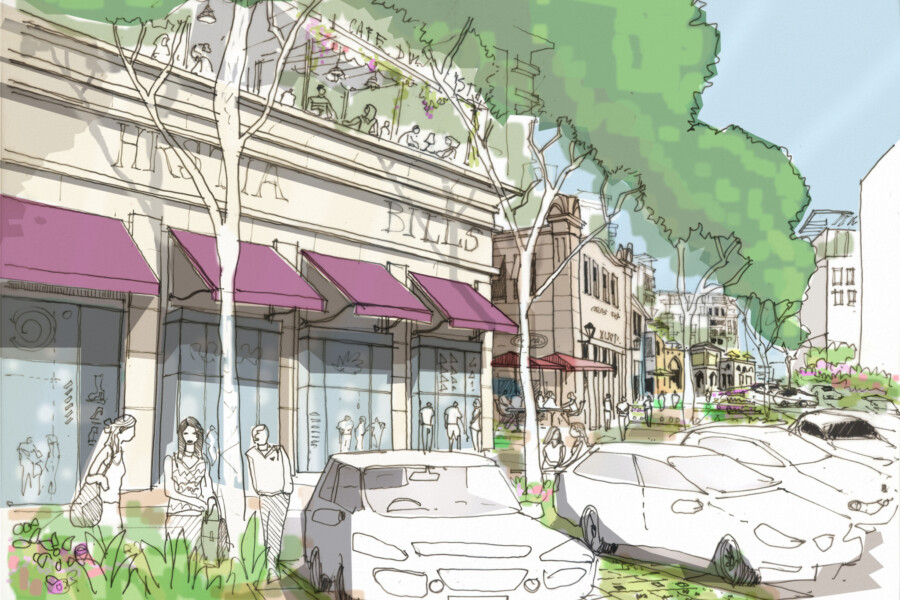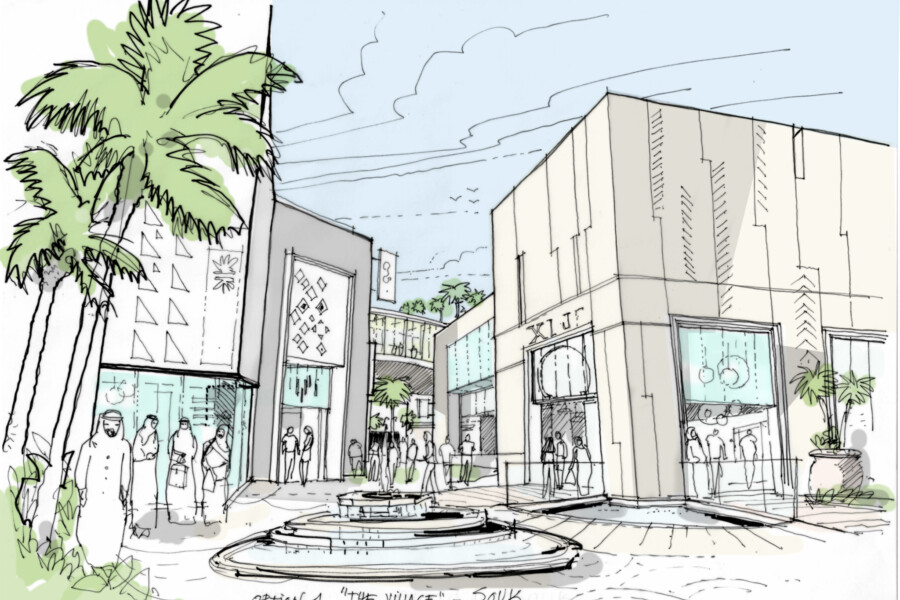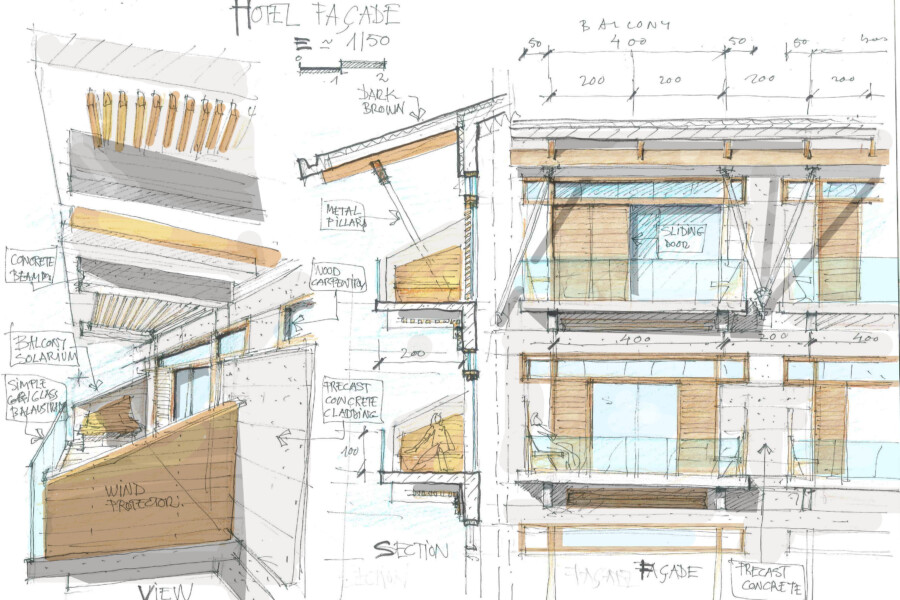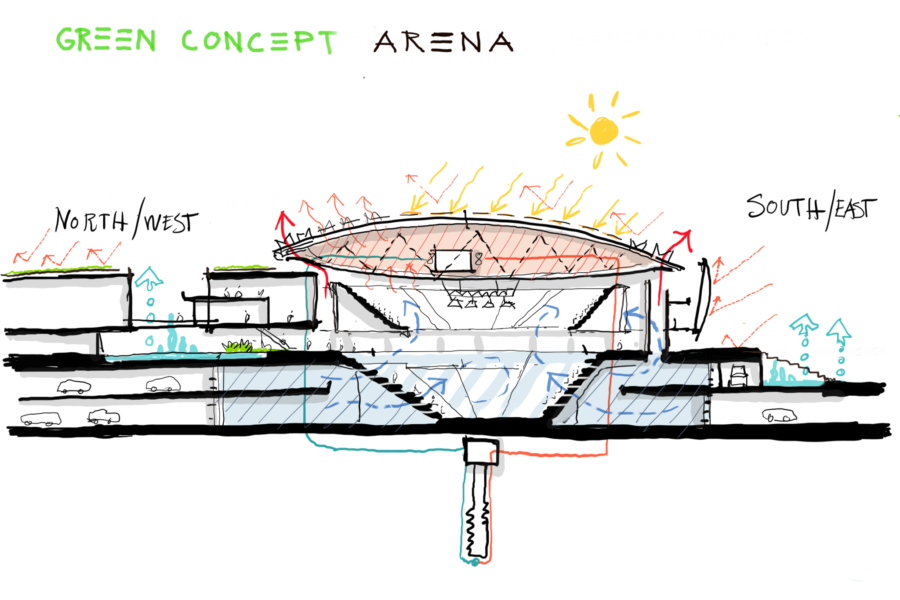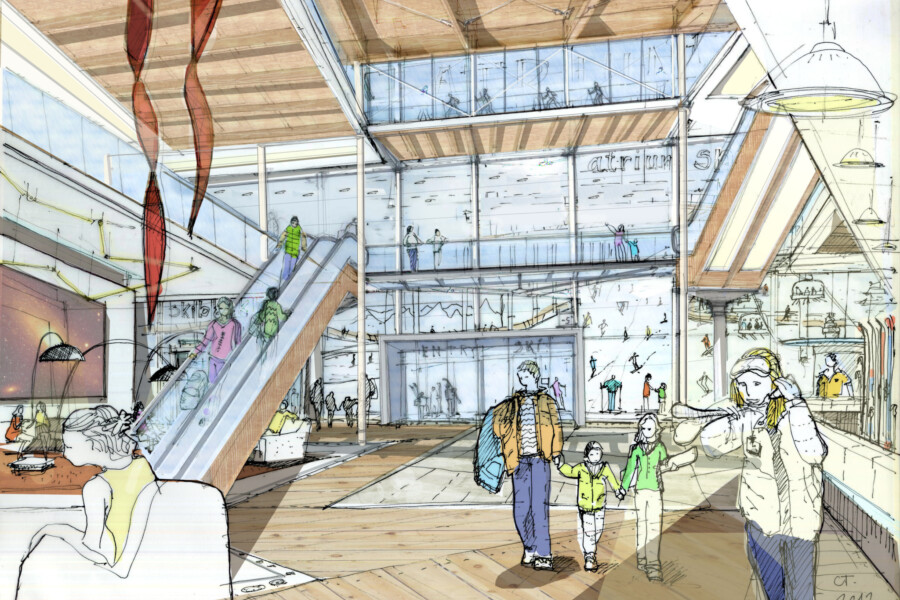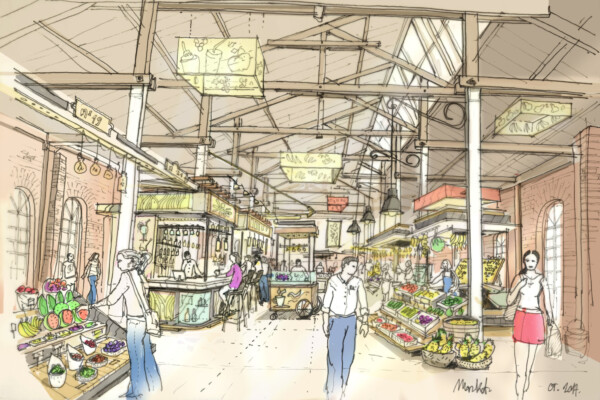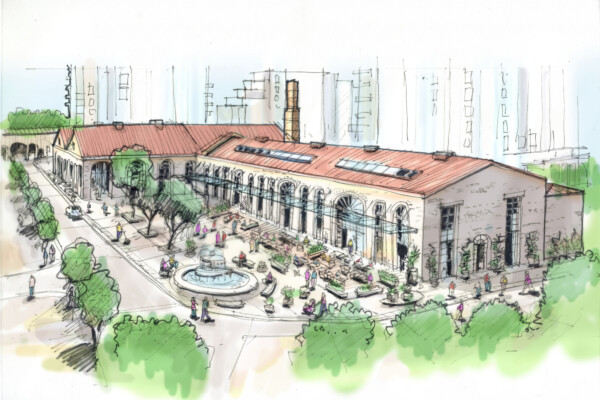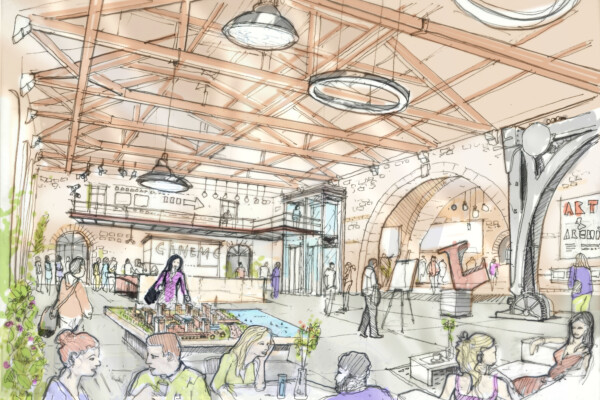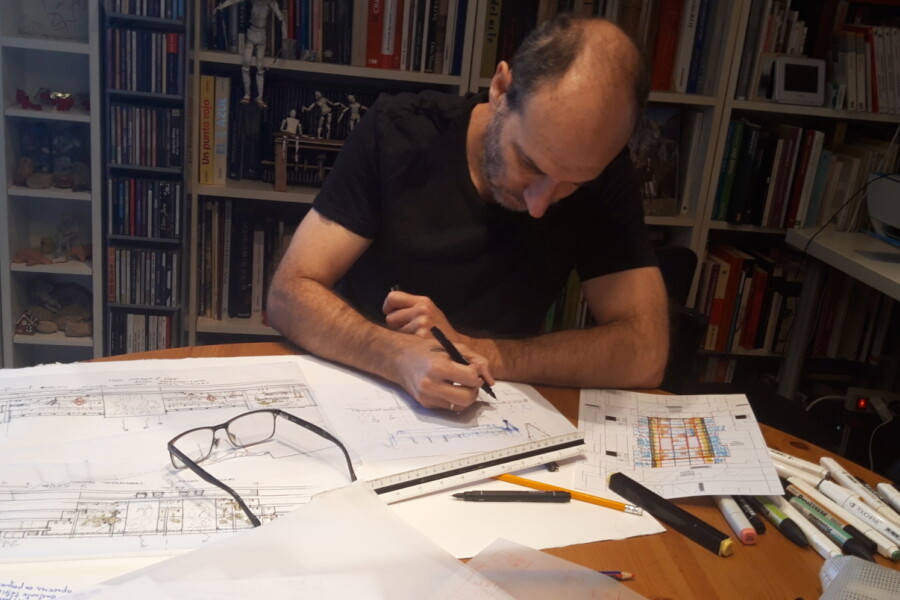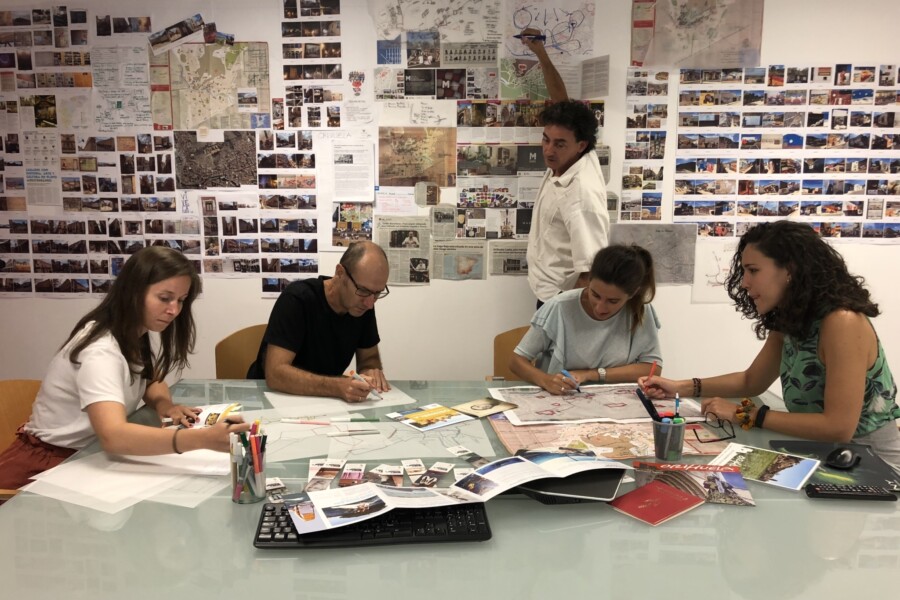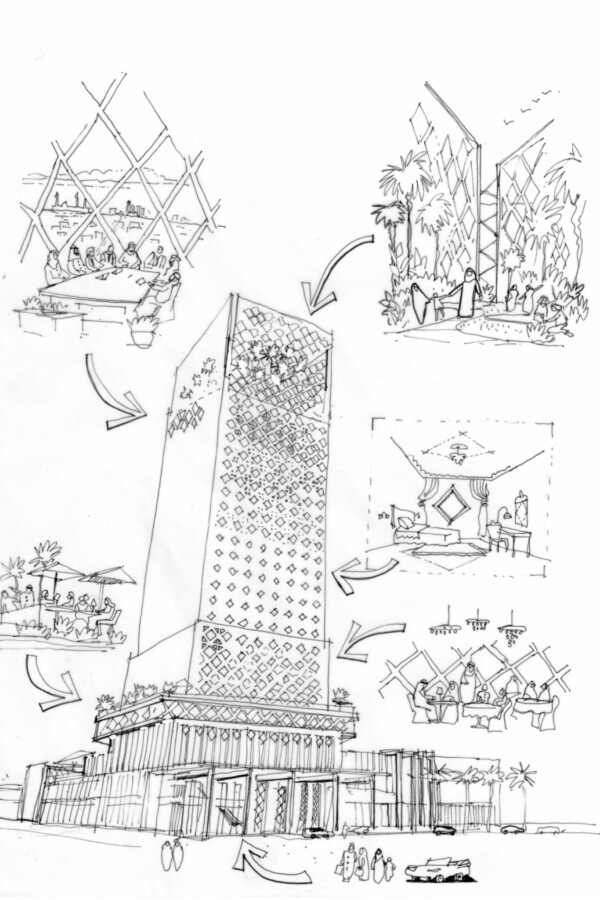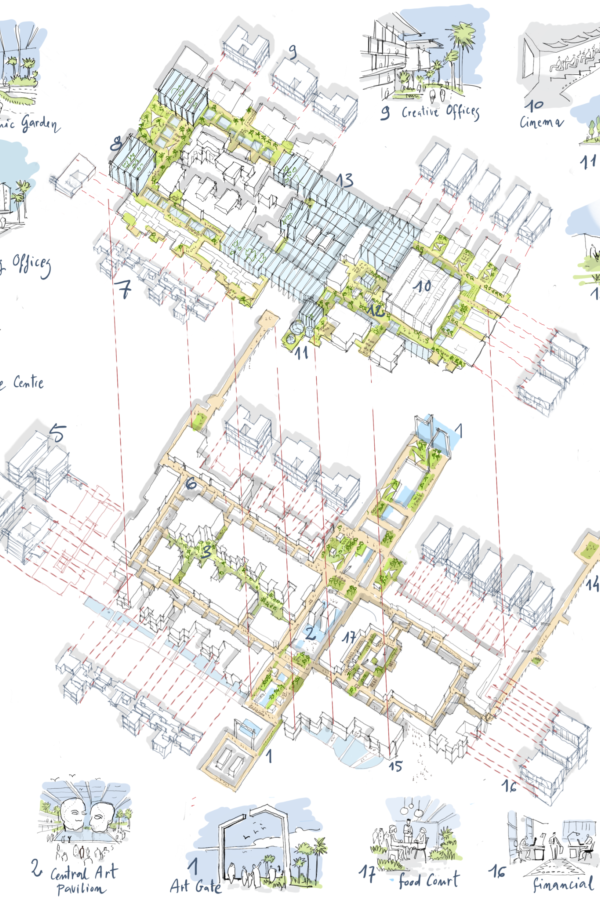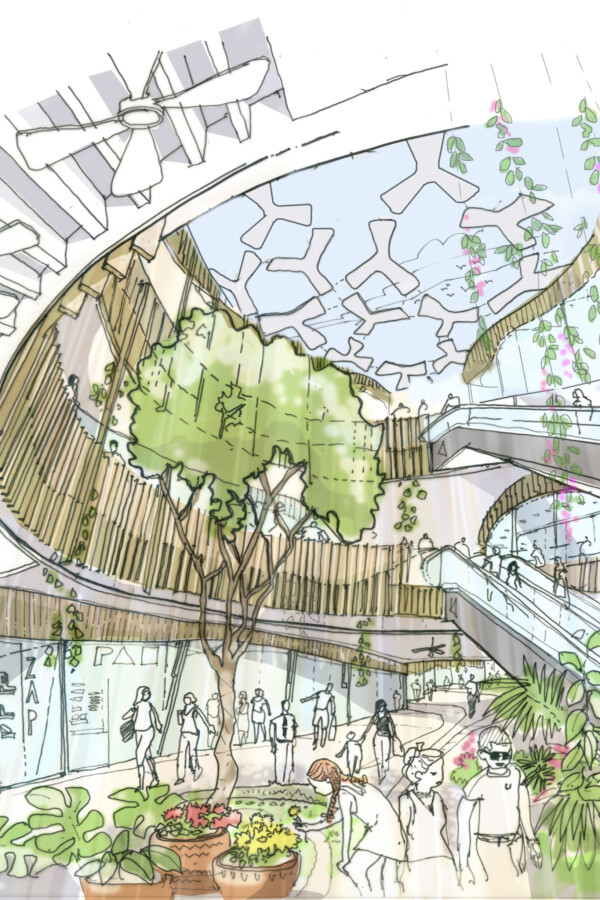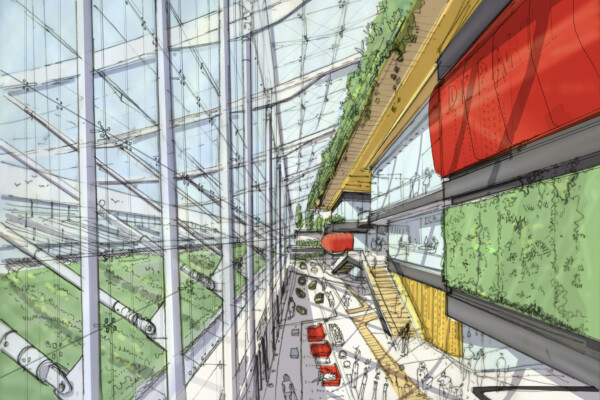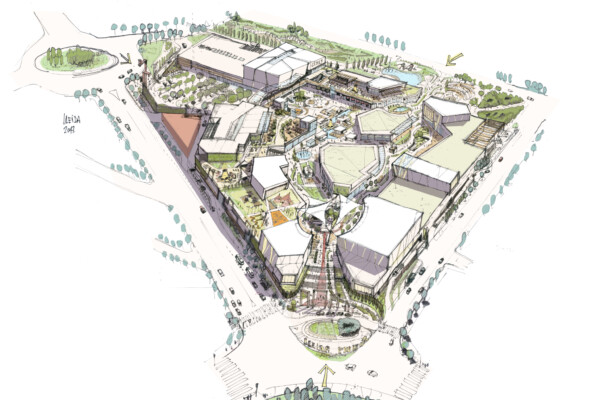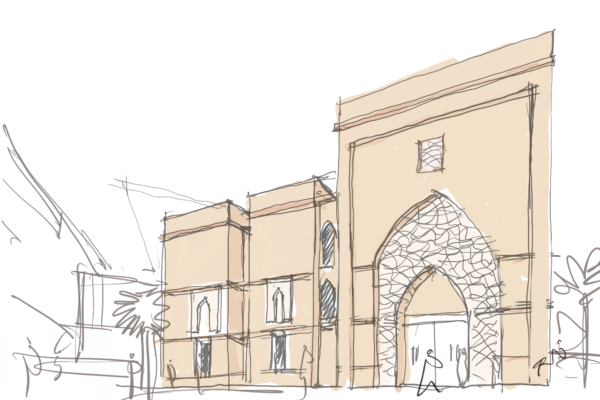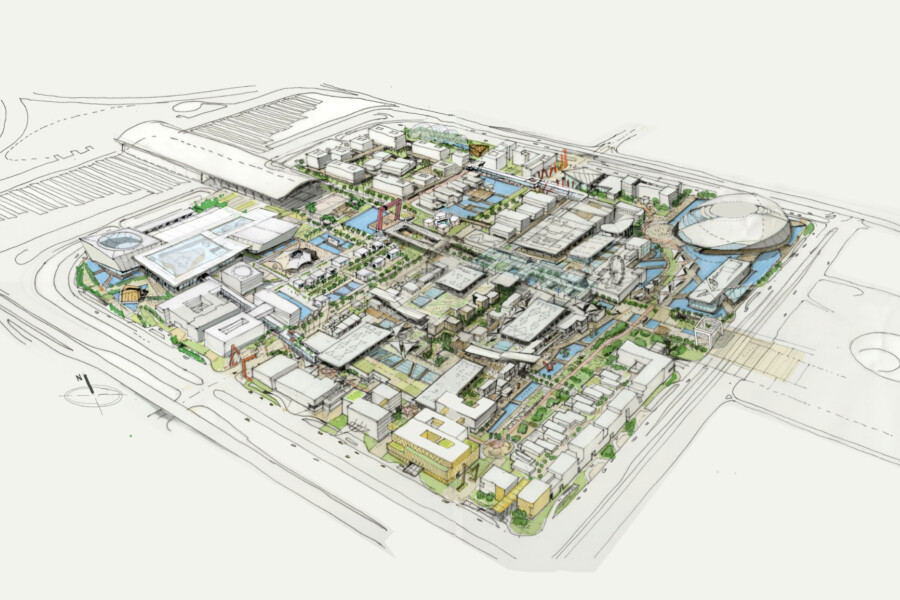
From sketch to reality: Architect Miguel García on using hand sketches to create and communicate ideas
Architect Miguel García joined Chapman Taylor’s Madrid studio in 2001 and has since worked on several of the studio’s best-known projects in many countries around the world. Miguel has an exceptional talent for creating design concepts and using his sketching skills to communicate ideas. Miguel talks here about the importance of traditional hand drawing for capturing, developing and communicating ideas.
Why sketching is so valuable
Hand drawing is perfectly adapted to the creative process and offers a useful and fast means of communication with the rest of the team and with the client. For me, the most important thing is not to draw very well, but rather to know how to communicate well through drawing. It must convey what you want to tell, be it a constructive detail, a concept or a simple feeling. A great sketcher communicates ideas well and has an ability to empathise with the viewer.
Sometimes, the drawing shows the personality of the person behind it; this can also be of great value because it humanises the visual dialogue.
When creating a concept, there are always several existing conditioning factors that you analyse for clues, such as the client brief, geography, culture, history, climate and surrounding urban fabric or landscape. Occasionally, there is a moment when you have a blank page in front of you and anxiety rises if five minutes pass and the page is still blank. I usually think out loud and, while I think, I write notes. Eventually, ideas start taking shape and a concept is born.
The drawing process can be very different in each case but, generally, it can be summarised in five phases. I will illustrate these below using two projects as :
- 1.First contact layout study
- 2. Concept and storyline
- 3. Concept development
- 4.Ambience
- 5. Detail
Drawing by hand is essential here. Most architects usually start with hand sketches due to their speed and because they allow for easy communication with the rest of the team. Sketching also helps me to think.
These first drawings do not normally reach the client, and often end up in the bin, despite the importance they have in the design process.
This is one of the most creative phases. I try to find a strong idea to create a coherent narrative, helping to inform the decisions made later in the process.
In this phase, we try to explain the entire project, or some of its most significant parts, in the clearest way possible. Drawing by hand is a very effective means of achieving this.
At this point in the project, the client has usually commissioned a lot of technical documentation, including CAD drawings, but still does not have a clear image of how their project will look. It's still too early to produce CGIs at this stage, but it is the ideal time to create sketches which convey a sense of the desired atmosphere for the scheme.
Finally, hand drawings are a very practical means of showing some details, whether they are to aid the planning and construction processes or to pass to the renderer to ensure that the final CGIs are faithful to our project vision.
As a medium, I usually use marker pens and I colour with Adobe Photoshop, although I also sometimes use coloured pencils. I have recently begun to use a tablet, which offers many expressive possibilities, both in the use of colour and in the type of brush.
Sketching is an indispensable part of the design process. It is quick, it allows for flexibility and expressiveness and it adds that human factor, making the projects more personal and intimate.
In addition, a hand drawing is never completely finished, and this allows for a range of possible interpretations by the viewer. My experience is that this involves clients and others in the design process at a deeper level, drawing them in and giving them a stronger sense of ownership of the design vision.
Why sketching is so valuable
Hand drawing is perfectly adapted to the creative process and offers a useful and fast means of communication with the rest of the team and with the client. For me, the most important thing is not to draw very well, but rather to know how to communicate well through drawing. It must convey what you want to tell, be it a constructive detail, a concept or a simple feeling. A great sketcher communicates ideas well and has an ability to empathise with the viewer.
Sometimes, the drawing shows the personality of the person behind it; this can also be of great value because it humanises the visual dialogue.
When creating a concept, there are always several existing conditioning factors that you analyse for clues, such as the client brief, geography, culture, history, climate and surrounding urban fabric or landscape. Occasionally, there is a moment when you have a blank page in front of you and anxiety rises if five minutes pass and the page is still blank. I usually think out loud and, while I think, I write notes. Eventually, ideas start taking shape and a concept is born.
The drawing process can be very different in each case but, generally, it can be summarised in five phases. I will illustrate these below using two projects as :
- 1. First contact layout study
- 2. Concept and storyline
- 3. Concept development
- 4. Ambience
- 5. Detail
Finally, hand drawings are a very practical means of showing some details, whether they are to aid the planning and construction processes or to pass to the renderer to ensure that the final CGIs are faithful to our project vision.
As a medium, I usually use marker pens and I colour with Adobe Photoshop, although I also sometimes use coloured pencils. I have recently begun to use a tablet, which offers many expressive possibilities, both in the use of colour and in the type of brush.
As a medium, I usually use marker pens and I colour with Adobe Photoshop, although I also sometimes use coloured pencils. I have recently begun to use a tablet, which offers many expressive possibilities, both in the use of colour and in the type of brush.
Sketching is an indispensable part of the design process. It is quick, it allows for flexibility and expressiveness and it adds that human factor, making the projects more personal and intimate.
In addition, a hand drawing is never completely finished, and this allows for a range of possible interpretations by the viewer. My experience is that this involves clients and others in the design process at a deeper level, drawing them in and giving them a stronger sense of ownership of the design vision.
